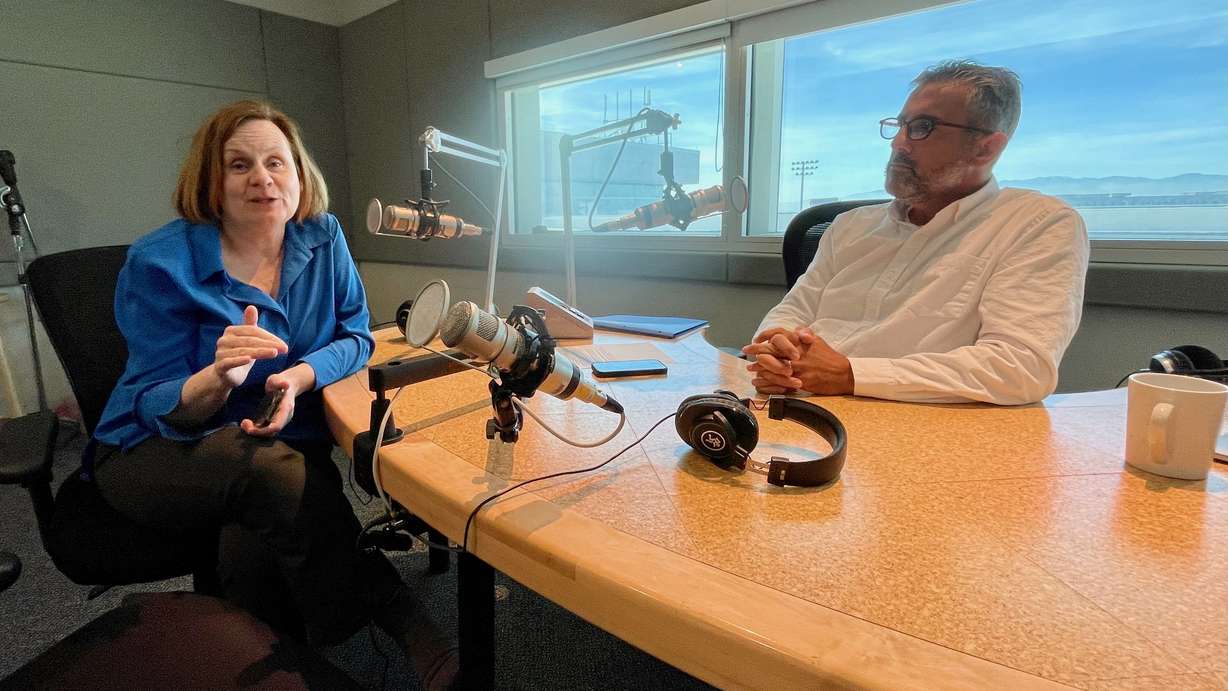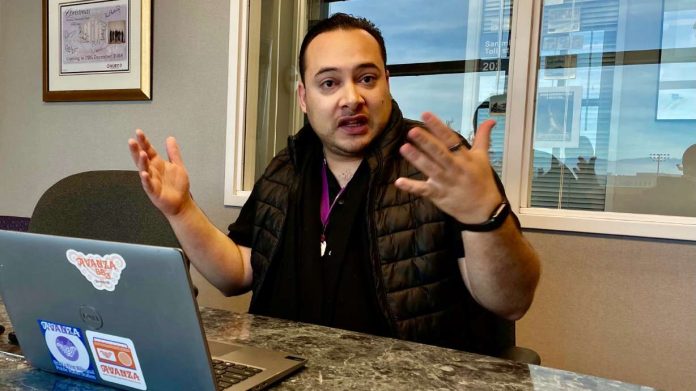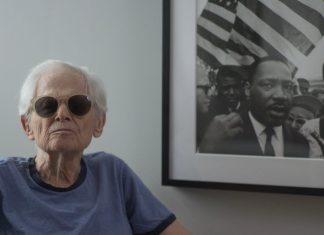SALT LAKE CITY — Avanza, the year-old public radio station housed at the University of Utah, is angling for a very specific, unique audience — not just English speakers, not just Spanish speakers.
“What we found is that there’s great media in English locally, but it doesn’t necessarily speak to the Latino experience specifically,” said Edgar Zuñiga, the Avanza program director. “And then also what we found is that the Spanish-language offerings that we have here in Utah are really for recent arrivals, people who maybe don’t speak English or haven’t lived here a long time.”
Accordingly, the small station — 88.3 on the FM dial and a sister station to KUER, Utah’s National Public Radio station — sees itself as a bridge between the two worlds, catering to the growing contingent of bilingual Latinos and others from the English-speaking world with their toes in Latin America. Programming flows from English to Spanish to Spanglish, and the station plays a broad range of Latin music genres, making it a rarity in U.S. radio.
“I don’t really feel that we have any competitors. What we’re doing is very new,” said Zuñiga, of Colombian descent.
Carina Linares, engagement producer for Avanza, speaks both English and Spanish. She grew up in Logan, her dad is from Guatemala and her mom is from Ecuador. Many of her friends are in the same multicultural boat, she said, and Avanza is meant as a space for the population.
“We love any way that folks want to show up in that kind of setting. If they speak a little bit of Spanish and mostly English, they can still listen. And even if they speak a little bit of English and a lot of Spanish, they’ll still understand it as well,” Linares said.
Maria O’Mara, executive director of Avanza, KUER and PBS Utah, the public television station, suspects some newer immigrants to Utah will turn to Avanza, though many from that population typically listen to commercial Spanish-language radio stations. The station, available online via streaming, recently expanded its signal beyond Salt Lake County so it can be heard over the airwaves in Ogden.
“But I would say our target demographic is a millennial who maybe primarily speaks English but is also speaking a lot of Spanish,” she said. “They might have grown up being sort of the translators in the home, helping their parents to be able to navigate being here.”
The station launched in earnest in the spring of 2024, after KUER and PBS Utah acquired the license for the frequency previously used by KCPW, a Salt Lake City public radio station that signed off on Oct. 31, 2023. Some programming has come from Radio Bilingüe, a Fresno, California-based public radio network and Spanish-content producer. Avanza also partners with Bilingual Sounds, a bilingual public radio station based in Los Angeles, California.

However, it also has its own programming, such as “Hecho en Utah” — “Made in Utah,” in English — which profiles Latino entrepreneurs in Utah. Moreover, it’s taking steps to expand on locally produced material.
Avanza recently brought on Spanish-language journalist Pablo Tellechea to help create a news and analysis program, similar to what he had done for La Ley, a commercial Spanish-language station in Utah at 107.1 FM. Launching in January, it’s called “Punto de Encuentro” — “Meeting Point,” in English — and Tellechea expects to address a range of issues, including mental health, education and the experiences of Latino immigrants in Utah, among many other things.
“It’s not only in Spanish. We want to bring everybody to the table and to talk about how we can have a better society,” Tellechea said. “My job here and my responsibility is to bring the conversation to the microphone, talk about it. … I don’t take sides, especially in politics.”
Zuñiga hopes to create space for other local people to take part in the station. “The idea is to increasingly become more local, to give more opportunities to volunteer DJs to really reflect the city and the state that we’re in,” he said.
Read more:
Through it all, music is the main focus of Avanza, and Zuñiga and Linares stressed the diverse range of sounds on the station, beyond the Mexican regional music that’s the staple of many commercial Spanish-language stations.
“I really think we do a good job of kind of painting a full array of Latin music. There’s just so much,” Linares said. “We have a lot more Caribbean music, salsas. We have boleros, bachata, cumbias, of course.”
The Key Takeaways for this article were generated with the assistance of large language models and reviewed by our editorial team. The article, itself, is solely human-written.








